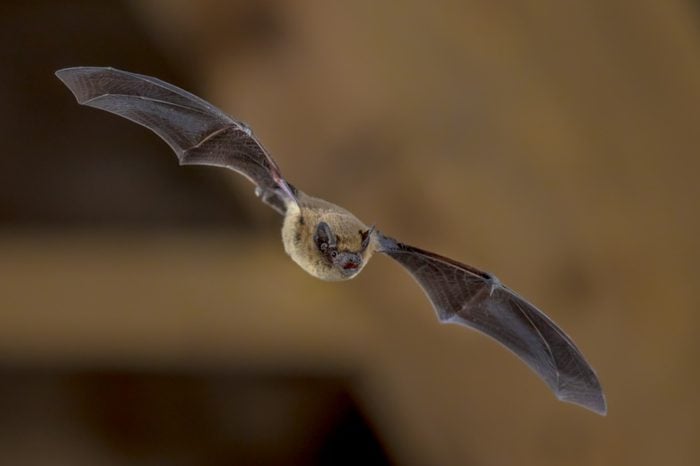
Bats get a bad rap
Before we dive in, let’s have a bat chat. They’re not out to suck your blood. In fact, they really don’t want to be near you at all. They prefer to be around insects that they can eat— and they eat a lot of them. Bats’ redeeming quality is that they are great for our ecosystem: They eat a lot of annoying insects, including mosquitoes, and some varieties of bats even pollinate the plants we eat for food and medicine. Ron Pelshaw, president of My Bat Guy, Bat Removal and Prevention, Inc., notes that bats are protected in many states, so not only is it inhumane to kill a bat, but it may also be illegal.
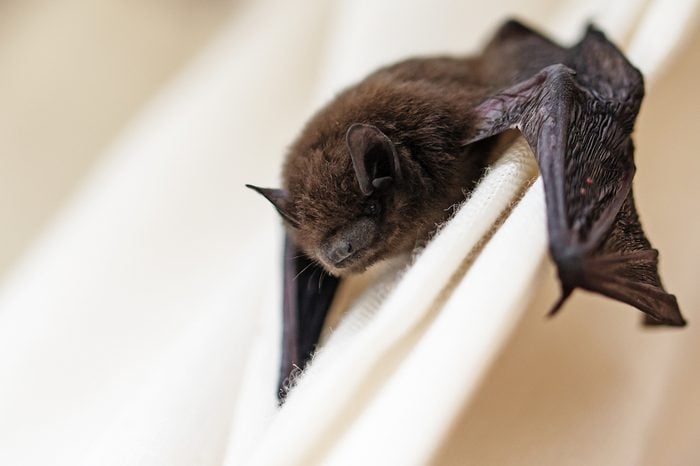
But what about rabies?
Bats aren’t purposely aggressive and are not out to bite you. And as for rabies, according to the United States Geological Survey, less than 1 percent of bats have rabies. Still, that doesn’t mean it’s a good idea to touch or pick up a bat with your bare hands or go near a nest of bat pups. In the unlikely event of a bat bite, wash the site thoroughly with soap and water and seek medical attention at once.

What about other diseases?
“Bat guano (poo) carries fungal spores that can cause a lung disease known as histoplasmosis,” says Pelshaw. It’s a fungus that people can get from breathing in spores in the air outdoor or inside, like the attic. It sounds alarming, but according to the CDC, most people don’t usually get sick from breathing in the fungus. And the people that do get sick usually feel very tired, have a cough and fever, but feel better on their own, without medication. However, histoplasmosis can be a serious health issue for infants or those with a weakened immune system, especially where guano is confined, like in an attic. “If a bat infestation is not taken care of, guano will build up in the attic and can cause the people living in the home to become ill,” says Pelshaw. Check out these 13 silent signs that your home is making you sick.
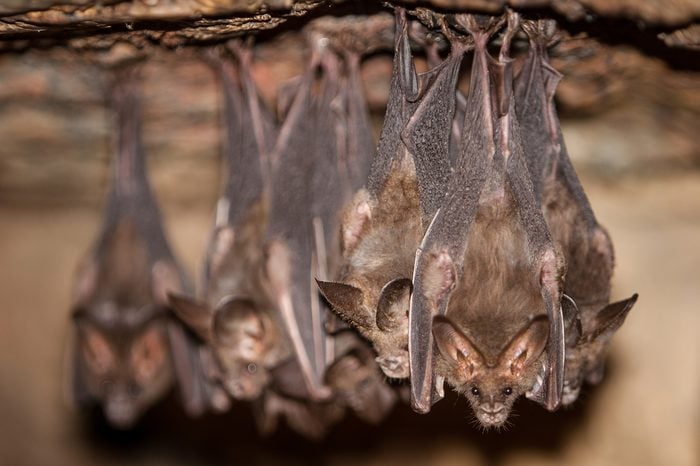
Flap and scratch
Ben Sciortino, owner of Tri-S Pest Control Service, says that a lot of homeowners think the odd noises coming from the attic are coming from mice or rats, but when they listen a little closer, they hear flapping of wings and scratching sounds, indicative of bats. “This is particularly common during dusk and dawn, when the bats are coming and going. Think of them as having rush hour no different from you and I have. However, their shift is nocturnal and the highway is your house,” says Sciortino.
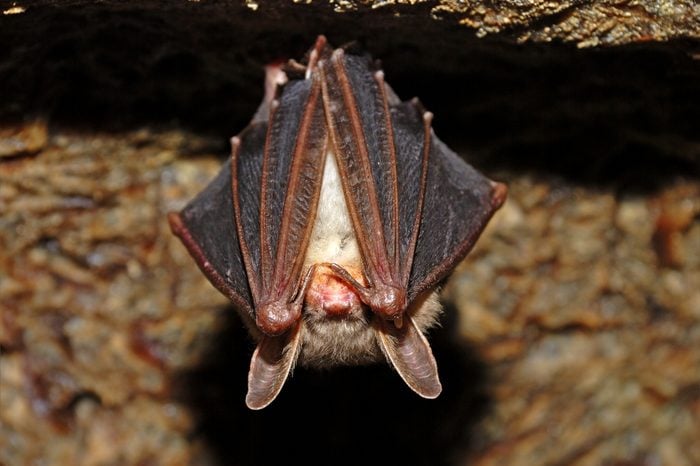
Guano droppings
Bat guano looks like tiny, elongated black pellets. It’s actually used as fertilizer because it’s rich in phosphorous and nitrogen, but it isn’t something you want to accumulate inside your home. You’ll find piles of it scattered within the walls of the attic or insulation under bat roosts. And it can really pile up quickly. “If you come across guano in the attic, look up and I bet you’ll see other evidence of bats,” says Sciortino. Guano turns to a fine dust as it ages, so you’ll probably want to leave the guano cleanup to a pro with the proper protective clothing and equipment. Check out these signs other pests are living in your attic.
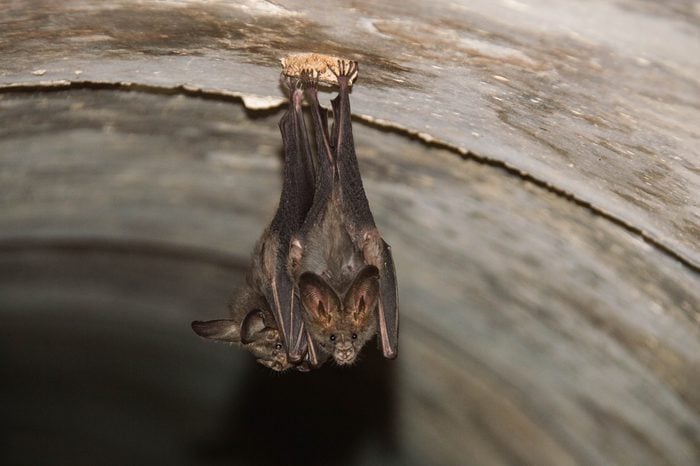
Strong ammonia odor
“Some homeowners never see the guano, but they smell something that’s as foul as ever,” says Sciortino. Ammonia from bat urine emits a very strong odor once there’s an infestation, and it smells just like a urine-soaked cat litter box. In some cases, urine trails can be seen on the walls or rafters in the attic. Find out how to get rid of the stinkiest of the stinkiest odors by using items in your pantry.
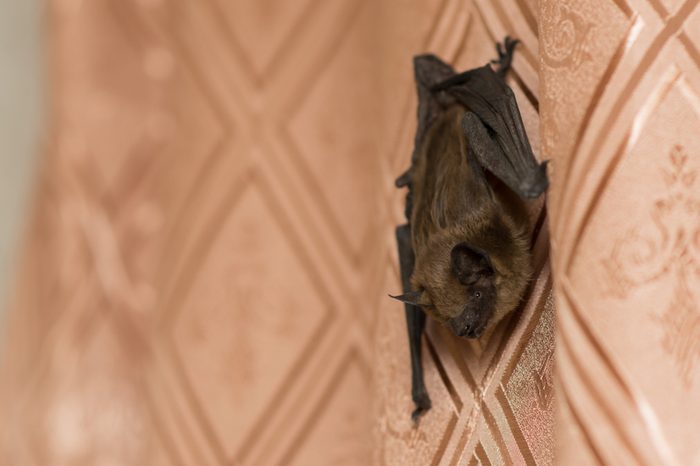
Grease marks
Bats aren’t the cleanest critters around. They have a dirty, greasy film on their coats. “If you see a dark-brown or even charcoal-gray residue on a hole near your attic, it’s a safe bet to assume you have bats,” says Sciortino. “Upon entering a home, they usually enter through a point that’s small, so they have to squeeze through it. During the process, this oil comes off, and after repeated entries and exits, the buildup will be obvious,” notes Sciortino.
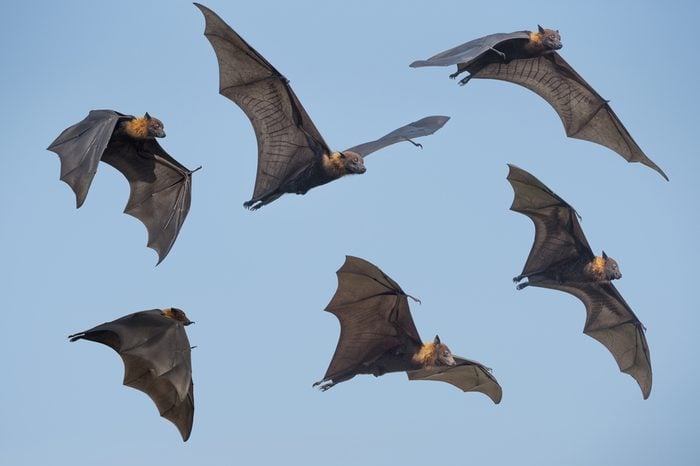
Night flights
Bats are nocturnal and will roost quite happily in a cozy attic, resting up to catch their nightly feast of insects. It’s not uncommon to see a bat or two at dusk, but if you see several and notice other signs, such as grease stains by points of entry like windows, vents, and shutters of your attic, you could have a bat hotel open for business right above your nose. Learn the 15 secrets exterminators won’t tell you about pests.
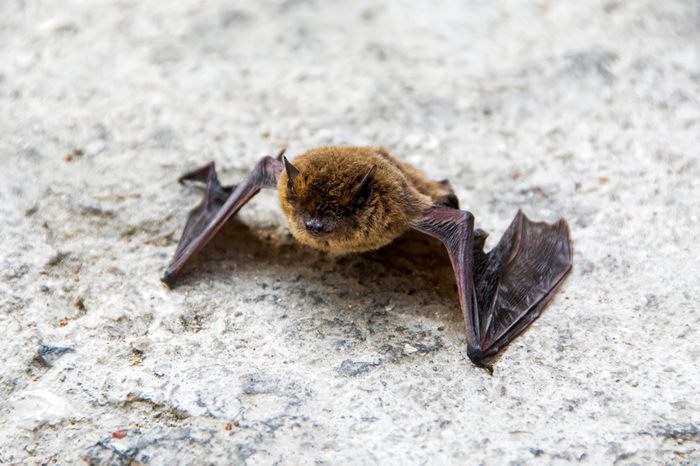
High-pitched squeaks
Bats use a high frequency to communicate that most humans usually can’t hear when bats are outside. But it is possible to hear a “chorus” of bats being emitted from the attic. “Depending on how many bats you have in the attic, you could hear them communicating, but it depends on your hearing and how many are contributing,” says Sciortino. “Those that can hear them say it’s a mixture of a chirping and squeaking. It’s quite faint, but if you have dozens in your attic, each little contribution could snowball into a more noticeable and annoying clue of an infestation.” Don’t ignore these 15 sneaky signs that your home is about to be infested.
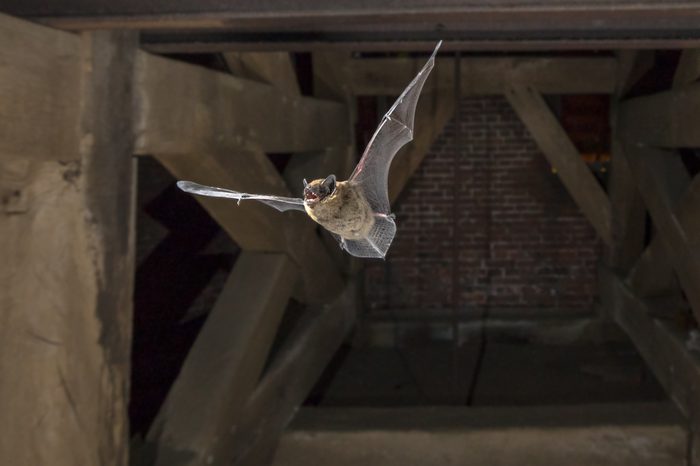
No bats allowed
Bats have their place in our ecosystem, but not in our attics. If you have signs of infestation, call a pest-control company for an assessment. It will humanely remove the bats from the attic and seal it to protect against future infestations. “Bats are extremely territorial, so getting the area assessed by a professional will ensure the bats leave and can’t get back in. Also, keeping up with preventative maintenance after the exclusion is extremely important to ensure the bats do not find another way in,” says Pelshaw.
